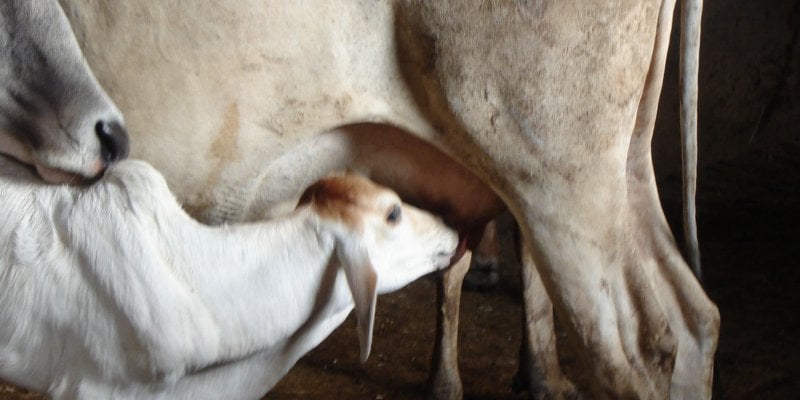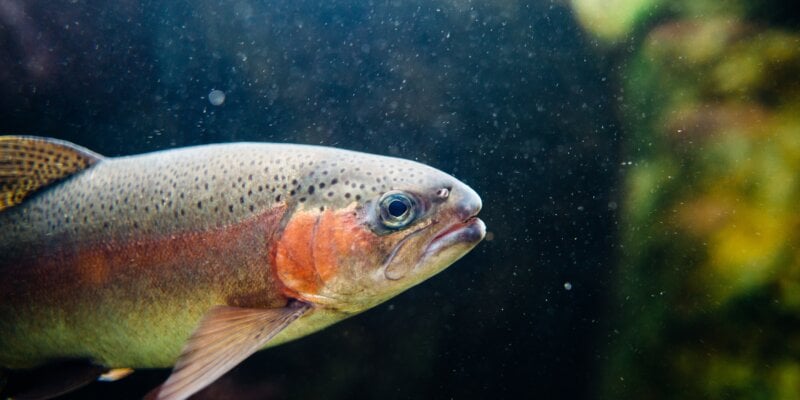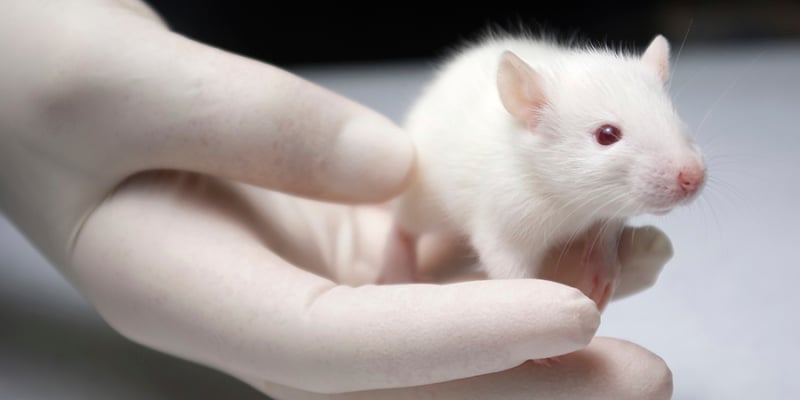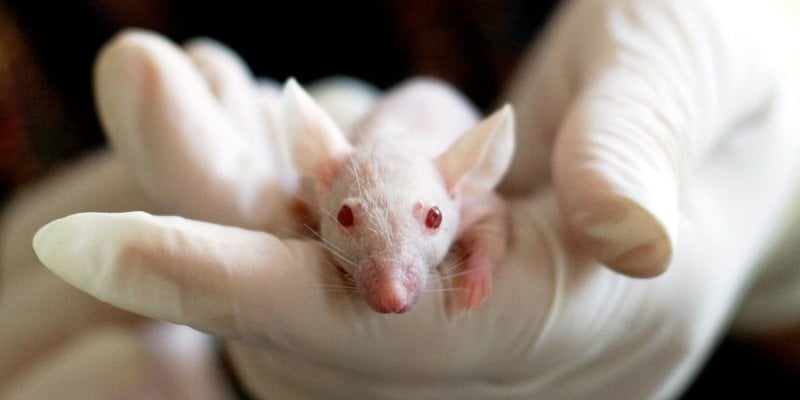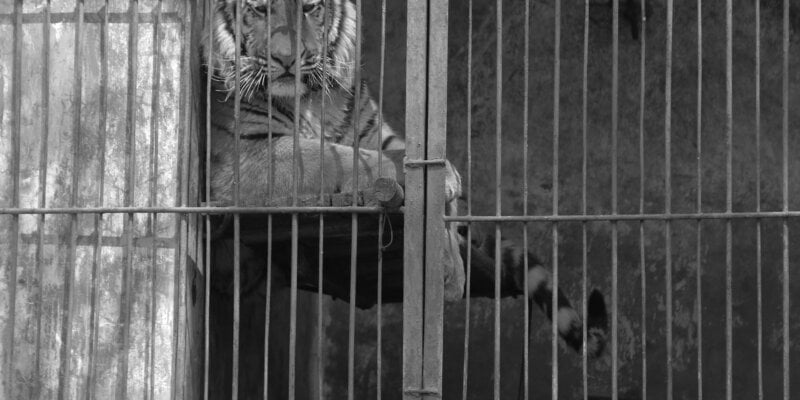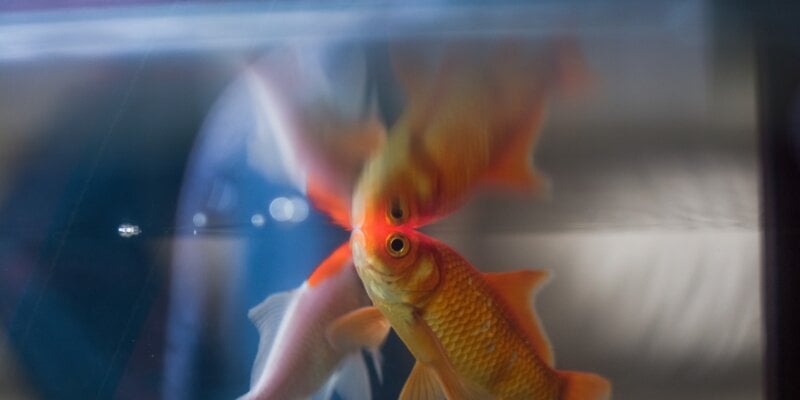What’s Wrong With Experimenting on Animals?
Progressive scientists know, and study after study has proved, that experimenting on animals wastes lives – both animal and human – as well as precious resources and time. Thankfully, a wealth of innovative, non-animal technology and research methods are readily available that produce superior results, which scientists can apply to humans to help eradicate the disease.
The following are our well-informed responses to claims that are commonly made in support of experiments on animals, debunking these myths.
Claim: “Every major medical advance is attributable to experiments on animals.”
This is simply not true. An article published in the esteemed Journal of the Royal Society of Medicine has even evaluated this very claim and concluded that it isn’t supported by any evidence. Experiments on animals aren’t reliable predictors for human health, and many are undertaken simply out of curiosity and don’t even pretend to hold promise for curing illnesses.
Researchers from the Yale School of Medicine and several British universities published a paper in The BMJ titled “Where Is the Evidence That Animal Research Benefits Humans?” The authors systematically examined studies that used animals and concluded that little evidence exists to support the idea that experimentation on animals has benefited humans.
In fact, many of the most important advances in health are attributable to human studies, including the discovery of the relationships between cholesterol and heart disease and between smoking and cancer, the development of X-rays, and the isolation of the AIDS virus.
Human health is more likely to be advanced by devoting resources to the development of non-animal test methods, which have the potential to be cheaper, faster, and more relevant to humans, instead of chasing leads in often inaccurate tests on animals.
“If we didn’t use animals, we’d have to test new drugs on people.”
We already do test drugs on humans because animals’ physiology differs from ours. Every species responds differently to viruses, drugs, and other substances . According to the US National Institutes of Health, 95 per cent of pharmaceutical drugs that are shown to be safe and effective in animal tests fail in human trials because they don’t work or are dangerous . Half of the drugs approved for human use in the US are relabelled because of severe or lethal side effects that were not identified in tests on animals . The US Food and Drug Administration has stated, “Currently, nine out of ten experimental drugs fail in clinical studies because we cannot accurately predict how they will behave in people based on laboratory and animal studies .”
“We have to observe complex interactions of cells, tissues, and organs in living animals.”
Taking healthy beings from a completely different species, artificially inducing a condition that they would never normally contract, keeping them in an unnatural and stressful environment, and trying to apply the results to naturally occurring diseases in human beings is a dubious undertaking, at best. With modern, cutting-edge technology, such as sophisticated human cell- and tissue-based research methods, that allows researchers to test the safety and effectiveness of new drugs, vaccines, and chemical compounds, the results obtained for naturally occurring diseases in humans are more reliable and relevant than the data obtained by killing animals.
“Animals help in the fight against cancer.”
A survey of 4,451 experimental cancer drugs developed between 2003 and 2011 found that more than 93 per cent failed after entering the first phase of human clinical trials, even though all had been tested successfully on animals. The authors of this study point out that animal “models” of human cancer created through techniques such as grafting human tumours onto mice can be poor predictors of how a drug will work in humans. According to former US National Cancer Institute Director Dr Richard Klausner, “The history of cancer research has been a history of curing cancer in the mouse. We have cured mice of cancer for decades and it simply didn’t work in humans.”
“We don’t want to use animals, but we don’t have any other options.”
The most significant trend in modern research is the recognition that animals rarely serve as good models for the human body. Human clinical and epidemiological studies, human tissue- and cell-based research methods, cadavers, sophisticated high-fidelity human-patient simulators, and computational models have the potential to be more reliable, more precise, less expensive, and more humane alternatives to experiments on animals. Advanced microchips that use real human cells and tissues to construct fully functioning postage stamp–size organs allow researchers to study diseases and also develop and test new drugs to treat them. Progressive scientists have used human brain cells to develop a model “microbrain”, which can be used to study tumours, as well as artificial skin and bone marrow. We can now test skin irritation using reconstructed human tissues (e.g. MatTek’s EpiDerm™), produce and test vaccines using human tissues, and perform pregnancy tests using blood samples instead of killing rabbits.
“Animals are here for humans to use. If we have to sacrifice 1,000 or 100,000 animals in the hope of benefiting one human, it’s worth it.”
Experimenters try to claim a “right” to inflict pain on animals based on arbitrary physical and cognitive characteristics, but their reasoning is so immoral that it would also justify experimenting on humans with “inferior” mental capabilities, such as infants and people with intellectual disabilities. If experimenting on one such person could benefit 1,000 children, would we do it? Of course not! Additionally, the money wasted on experiments on animals could be used to help humans via modern, human-relevant, non-animal tests.

















